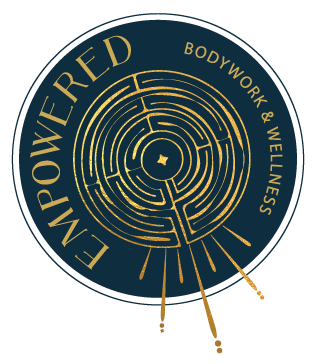Welcome back! If you read last week's post about the psoas (you can read it here), we mentioned Sartorius at the very end. I am very excited to share some information about this amazing muscle! Sartorius tends to fly under the radar and doesn't always get the attention it deserves. Despite its slender appearance, this muscle is a key player in lower-body mobility and balance.
Meet the Sartorius

The sartorius is famous for being the longest muscle in the human body. It begins at the front side of the pelvis, an area called the anterior superior iliac spine (ASIS), then runs diagonally across the front of the thigh, and inserts at an area called pes anserinus on the medial side of the tibia (inner shin area).
*FUN FACT* Its distinctive shape gives it the nickname the “tailor’s muscle”—a nod to the cross-legged sitting position tailors traditionally used, which engages the sartorius.
What Does Sartorius Do?
This incredible muscle is quite the multi-tasker. It assists with several movements of the hip and knee. Its main actions include:
- Hip flexion (lifting the thigh toward the body)
- Hip abduction (moving the thigh outward)
- Hip external rotation (turning the thigh outward)
- Knee flexion (bending the knee)
Basically, anytime you’re sitting cross-legged, climbing stairs, or pivoting your leg outward, your sartorius is at work. Starting to see why we love combining this one with the psoas?
Why It Matters in Your Massage
Even though the sartorius is a superficial muscle, it can be tricky to pinpoint. It works closely with deeper muscles and sometimes gets overshadowed by larger muscles when assessing lower-body tension or pain.
Common complaints that we get that may involve the sartorius include:
- Inner knee discomfort
- Hip stiffness or reduced range of motion
- Discomfort during activities that require hip flexion and rotation
How We Approach the Sartorius
When I am drawn to work with the sartorius, I take a gentle and mindful approach because it is right next to sensitive structures like nerves and blood vessels. Here’s how I typically address it:
- Assessment: Listening to what you are saying during the intake process and checking hip and knee flexibility.
- Techniques: Using myofascial techniques, working surrounding muscles, and passive stretching encourages relaxation and lengthening of the muscle. Working the surrounding muscles is key for a holistic approach and results. Remember, we love treating the body as a whole.
- Client Education: Before leaving, we love empowering our clients by recommending gentle hip and thigh stretches (coming up... just keep reading) to keep the sartorius moving and lengthened between sessions.
Self-Care Tips for Clients
To support your precious sartorius muscle, here are some suggestions:
- High Lunge: Step forward with one leg, keeping your back leg straight and your front knee bent at a 90-degree angle. Lean forward slightly, feeling the stretch in the front thigh and hip.
- Sitting Cross-Legged: Step forward with one leg, keeping your back leg straight and your front knee bent at a 90-degree angle. Lean forward slightly, feeling the stretch in the front thigh and hip.
- Camel Pose: Begin in a kneeling position, with your hands on your hips. Lean backward, keeping your back straight and engage your core. Hold for 20-30 seconds. Repeat several times.
Final Thoughts
So there you have it! A short and sweet overview of the sartorius muscle. While the sartorius may not be the star of the show compared to bigger muscles, we hope you now understand the supporting role it plays in your body.
Don't worry. I hear your thoughts. "Becky, I still don't understand why you work this one with the psoas." Well, let me tell you. They have a very big job in common. Flexing the hip. I feel that by working those surrounding muscles that do common actions, they truly support each other in releasing tension. It is super important to work the body as a whole. We need the body to work as a whole unit to be able to gain balance and homeostasis.
Wishing you rest and renewal, Becky


